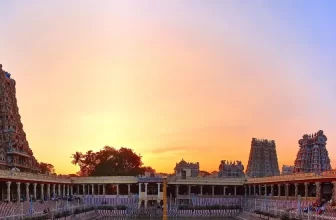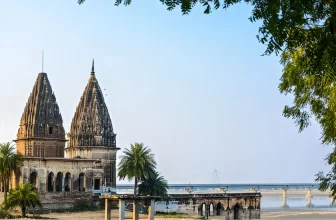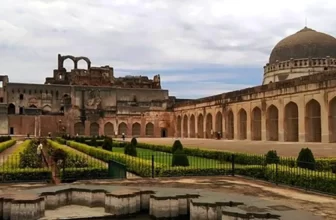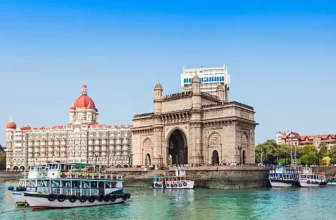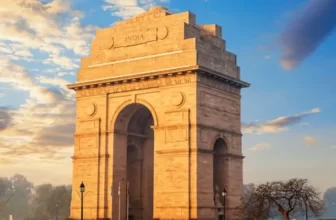Best Cities to Study and Live in India: Where Dreams Take Flight.
Study Guide India : Where Tradition Meets Global Opportunity
Looking for an affordable, culturally rich, and academically respected study destination? Then namaste, and welcome to this detailed study guide India.
India is not just a land of spices, Bollywood, and sacred rivers. It’s one of the fastest-growing education hubs in the world. Home to over 1,000 universities and 40,000+ colleges, India blends ancient wisdom with modern innovation.
You’ll find everything from Ivy-league-level tech institutes to globally resourced research universities in medicine, business, arts, and more.
And the best part? India offers all of this at a fraction of the cost compared to countries like the US, UK, or Australia. Add in a youthful economy, warm hospitality, and English-taught programs, and you’ve got yourself a study abroad experience unlike any other on the map.
Let’s explore the why, what, where, and how of studying in India, no fluff, just real talk.
Why India is a Rising Star for International Students
Here’s something you should know up front: India is the 2nd largest education system in the world. But it’s not just the numbers, it’s the quality and global impact.
Students from over 165 countries study in India every year. That number’s rising, and for good reason.
- Diverse, globally respected academic programs
- Affordable tuition and cost of living
- Programs taught in English
- Flexible and welcoming visa policies
- Strong tech, business, and research sectors
India isn’t just about getting a degree. It’s about discovering a whole new way of thinking. A place where ancient philosophy meets startup culture. Where your classroom can be both a traditional university AND a buzzing industry internship.
If you’re looking for education + transformation, India stacks up well.
Top Universities in India Worth Knowing
India may not top all the global rankings yet, but don’t let that fool you. Some of the brightest minds in Silicon Valley, the UN, global startups, and Nobel Prize circles started their journey here.
Here are some of the real-deal institutions that draw in international students:
1. Indian Institute of Technology (IITs)
The crown jewels of Indian technical education. With 23 IITs nationwide, they’re known for engineering, tech, and research. Super competitive, but worth every ounce of effort.
2. Indian Institute of Management (IIMs)
Top-tier B-Schools with global clout. Especially IIM Ahmedabad, Bangalore, and Calcutta. Strong placements in consulting, finance, and entrepreneurship sectors.
3. Jawaharlal Nehru University (JNU)
A hub for social sciences, international relations, and liberal arts. Politically active, academically rich.
4. University of Delhi (DU)
One of the oldest and most prestigious universities in India. Great for humanities, commerce, life sciences, and legal studies.
5. Manipal Academy of Higher Education
Popular among international students, especially in medicine, health sciences, and engineering.
6. Amrita Vishwa Vidyapeetham, VIT, SRM, Shiv Nadar, Ashoka University
These are rising stars in tech, biotech, liberal arts, design, and global studies.
Each university has its own flavor. Whether you’re academically straight-laced or creatively inclined, India’s got something tailored for you.
Popular Courses in India That Attract Global Students
Let’s get into what you can actually study. The options? Diverse. And often ranked among the best in Asia.
Engineering & Technology
From computer science and mechanical engineering to artificial intelligence, India’s IITs and NITs are international powerhouses. Many programs come with co-op or internship options with leading firms like Infosys, TCS, or even Google India.
Medicine & Health Sciences
MBBS programs at AIIMS, Manipal, and private medical colleges are popular, especially among students from Africa, the Middle East, and South Asia.
Business & Management (MBA)
IIMs, XLRI, ISB, these names carry weight. Offering affordable MBA programs with competitive placements in global firms. Case study heavy, globally aligned.
Law & Humanities
If you’re into international relations, political science, or philosophy, JNU and Delhi University offer programs rich in heritage and sharp in analysis.
Arts & Design
NID, NIFT, Srishti School of Design, and MIT Pune are known for animation, fashion design, graphic communication, and industrial design. Creatives flock here.
Science & Research
Indian science institutes (IISc, IITs, IISER) lead projects in astrophysics, biotech, chemistry, environmental science, and renewable energy.
Bonus? Many of these are taught in English and are fully recognized internationally.
The Real Cost of Studying in India
Alright, money talk. This is where India really stands out.
Tuition Fees
- Engineering/Science Programs: $2,000 to $5,000/year
- Medical: $6,000 to $12,000/year (can go higher in private colleges)
- Business/MBA: $5,000 to $15,000/year
- Humanities/Arts: $1,500 to $3,500/year
These costs are for full-time programs in English at top universities. Private institutions may charge more but often provide additional facilities and global exposure.
Living Expenses
- Rent (shared apartment or hostel): $100–$300/month
- Meals: $100/month (less if you go local)
- Transportation and utilities: $30–$60/month
- Internet, mobile, entertainment: $20–$40/month
Total average cost: $3,000 to $5,000/year. Yep, you read that right.
Compared to Western countries, you’re saving up to 70–80% on costs, yet still gaining recognized qualifications.
Scholarships Available for International Students in India
Yes, you can fund your education here.
Here are some scholarship programs worth checking out:
1. Study in India (SII) Scholarship
Launched by the Indian Government. Offers up to 100% tuition coverage for eligible foreign students applying to participating institutions.
2. ICCR Scholarships
Offered by the Indian Council for Cultural Relations. Covers tuition, accommodation, and a monthly stipend. Prioritizes students from developing countries.
3. SAARC Scholarships
Specifically designed for students from South Asian countries studying in Indian universities.
4. University-specific Scholarships
Institutions like Amity, Manipal, and SRM offer partial or full waivers based on merit and country of origin.
Pro tip: Apply early and support your application with a strong personal statement and academic records. Some programs are competitive, but achievable.
What Are Career Prospects in India Post-Study?
Here’s a truth bomb: India’s job market is booming.
While it was once common for international students to return home, that trend is shifting. Foreign grads now find real traction in:
- Tech and Software Engineering
- Healthcare and Public Health
- Marketing and Management
- Design, Animation, and AI UX
- Startups and E-commerce
- Education and Ed-tech
Especially in cities like Bangalore, Hyderabad, Pune, Mumbai, and Delhi NCR, career growth is fast-paced. Add in India’s massive startup ecosystem, and there’s no shortage of opportunities.
Companies are open to hiring international talent, particularly in tech and innovation sectors. Some even sponsor employment visas for high-performing grads.
Documents Required to Study in India
Now, let’s get admin-ready.
You’ll typically need:
- Valid Passport
- Recent Passport Photos
- Offer/Admission Letter from an Indian University
- Academic Transcripts and Certificates
- Proof of English Proficiency (if required)
- Medical Fitness Certificate
- Proof of Funds (bank statements or scholarship letters)
- Completed visa application form
- Recommendation letters (in some cases)
Always confirm with the Indian embassy or university portal before applying, the checklist may vary slightly.
India Study Visa Process – What You Need to Know
Good news: The Student Visa process is straightforward if you have an offer.
Step-by-Step Guide:
- Receive Offer Letter from a recognized Indian institution.
- Gather Documents – including proof of funds, academic records, passport.
- Apply Online via the official Indian Visa Application system or through a VFS center.
- Submit Biometrics & Attend the Interview (if required in your country).
- Visa Approval & Travel – The Indian Student Visa is valid for the duration of your course with multiple entries.
Processing time: 5–15 working days on average.
Fee: Varies by country. Typically ranges from $40 to $100.
Once in India, register with FRRO (Foreign Regional Registration Office) within 14 days of arrival (some exemptions exist).
Final Thoughts – Wrapping Up the Study Guide India
Studying in India is not just a decision. It’s an experience. A rich, vibrant collision of culture, innovation, tradition, and ambition.
This study guide India isn’t just about finding a school. It’s about understanding what you want to achieve, where you want to go, and how this country can get you there.
From top-notch institutes and globally-valued degrees to low tuition, heartwarming culture, epic street food, and post-study job opportunities, India delivers.
Yes, it’s vibrant. Yes, it’s a little chaotic. But once you get into the flow, it’s magic.
Top 10 FAQs About Studying in India
1. Is it expensive to study in India as an international student?
Not at all. Tuition and living costs are far cheaper than in most Western nations, often 70% more affordable.
2. Is English used for instruction?
Yes. Most higher education courses, especially in tech, medicine, and business, are taught in English.
3. Can I work while studying in India?
Currently, India doesn’t offer a standard student work permit. Some institutions allow internships, but external part-time work is restricted.
4. Is a degree from India recognized globally?
Yes, especially from reputed institutes like IITs, IIMs, and top private universities.
5. What’s the duration of degrees in India?
Bachelors: 3–4 years
Masters: 1–2 years
Medicine: 5–6 years
6. Do I need to know Hindi to live in India?
No, but learning basic phrases can help. Most Indians speak at least some English.
7. How can I apply for scholarships in India?
Start with the Study in India portal, ICCR, and university websites. Apply early and follow guidelines closely.
8. Is India safe for international students?
Yes. Most university campuses are safe and have strong support networks for foreign students.
9. Can I stay in India after graduation for work?
There’s no set post-study work visa yet, but companies sometimes sponsor work visas. Changes are expected soon.
10. What are the best cities for international students in India?
Mumbai, Delhi, Bangalore, Pune, Chennai, and Hyderabad are top picks, rich in culture, education, and opportunity.
Ready to take the dive? Let India be more than just a destination. Let it be your launchpad.
Bookmark this study guide India, do your research, and start your journey. The future’s waiting.

